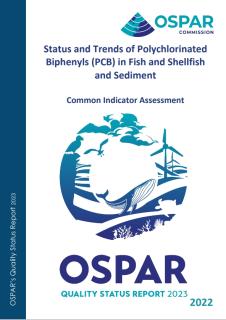
This report reviews PCB concentrations in marine sediment and biota across the North-East Atlantic from 2001 to 2020. It focuses on seven indicator congeners, with CB118 – due to its dioxin-like toxicity – assessed separately. The analysis applies background assessment concentrations (BACs) and environmental assessment criteria (EACs) to evaluate pollution levels.
Findings show that PCB levels are mostly stable or declining, with many sites below levels of concern. However, EAC exceedances for CB118 suggest continued risks to marine life, and few areas met the more stringent BAC thresholds. The report underscores the persistence of PCBs in marine systems and notes that recovery will take decades.
It also highlights knowledge gaps, especially regarding diffuse and secondary sources, and points to transboundary PCB transport, including emissions linked to obsolete equipment and e-waste from regions such as Africa. These insights are relevant to national officials and experts involved in NIP updates, hazardous waste management and regional coordination under the Stockholm Convention.
